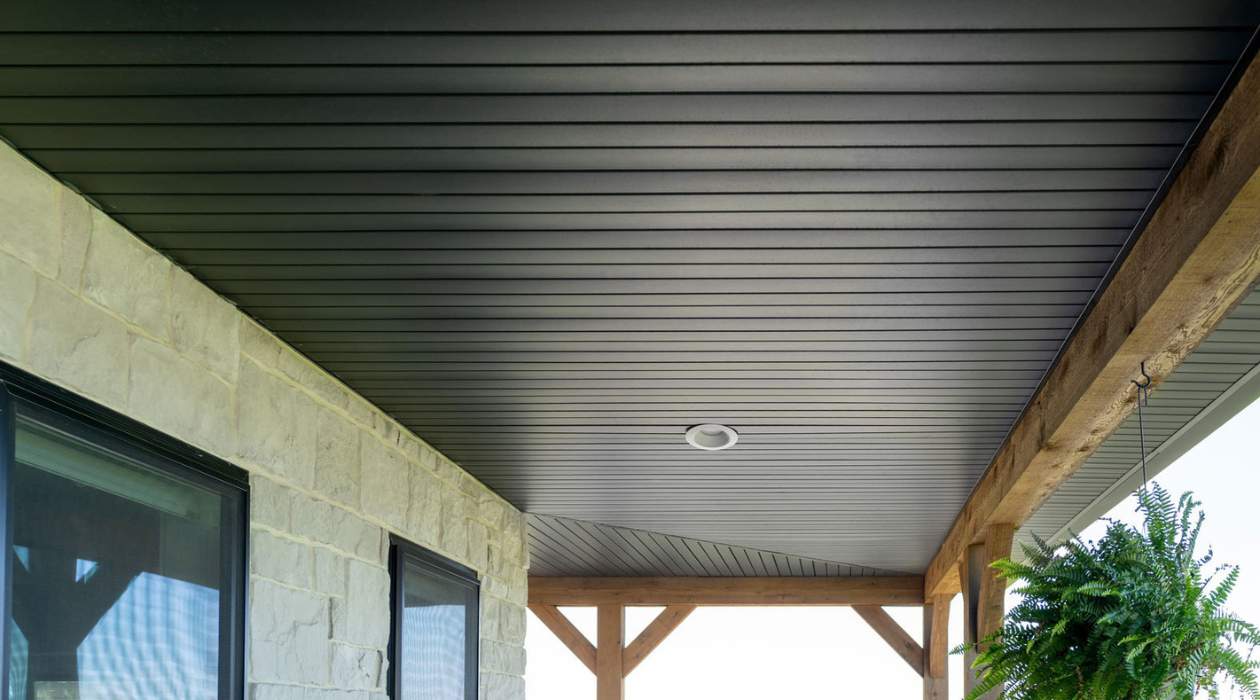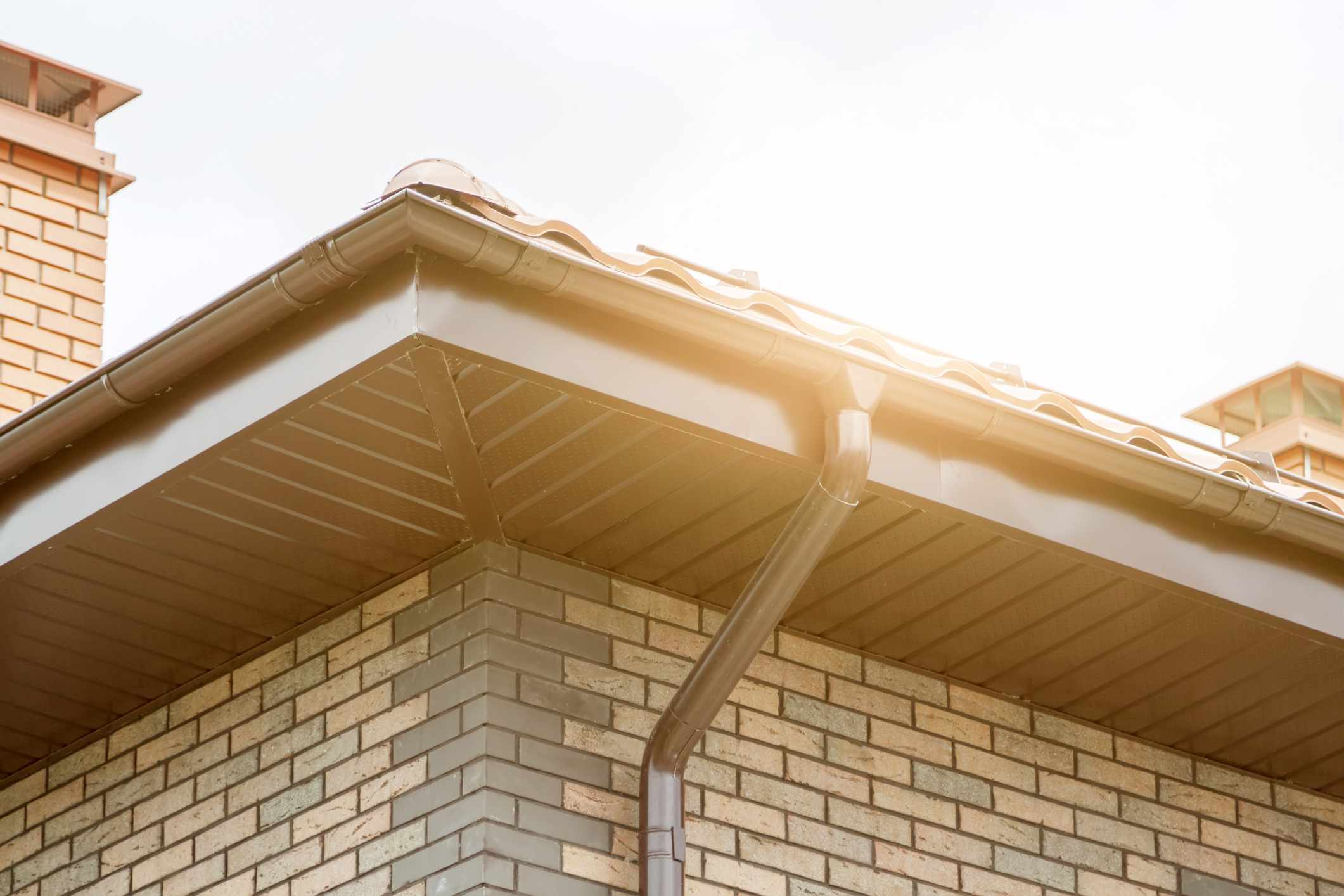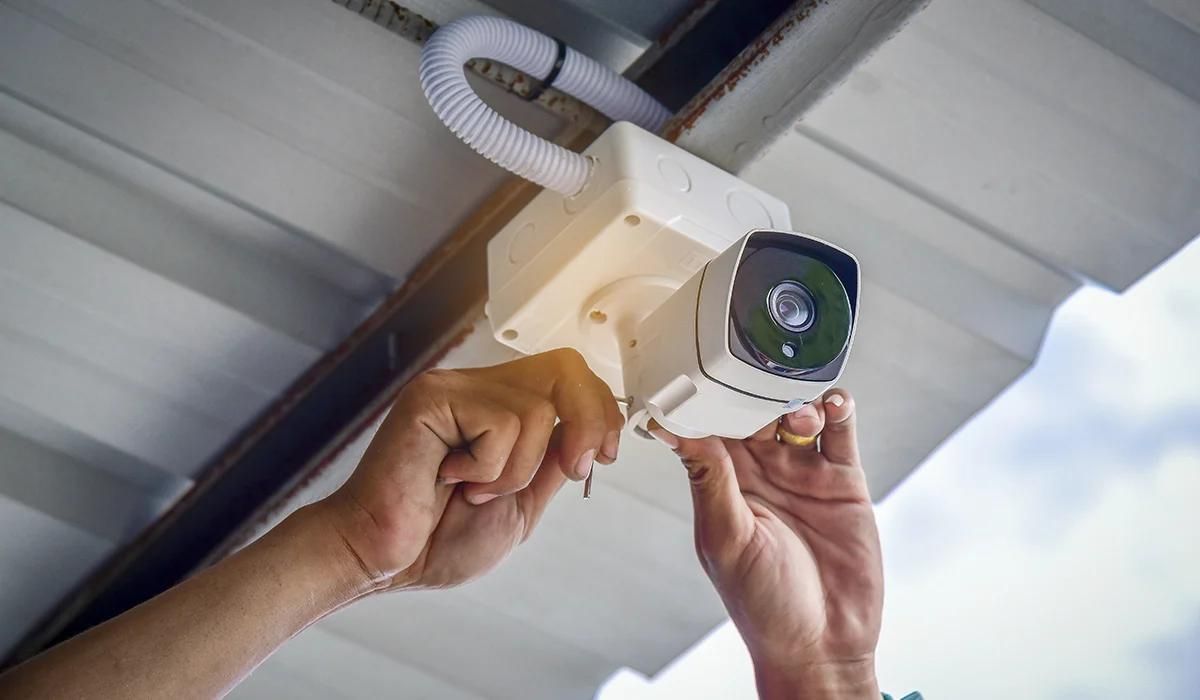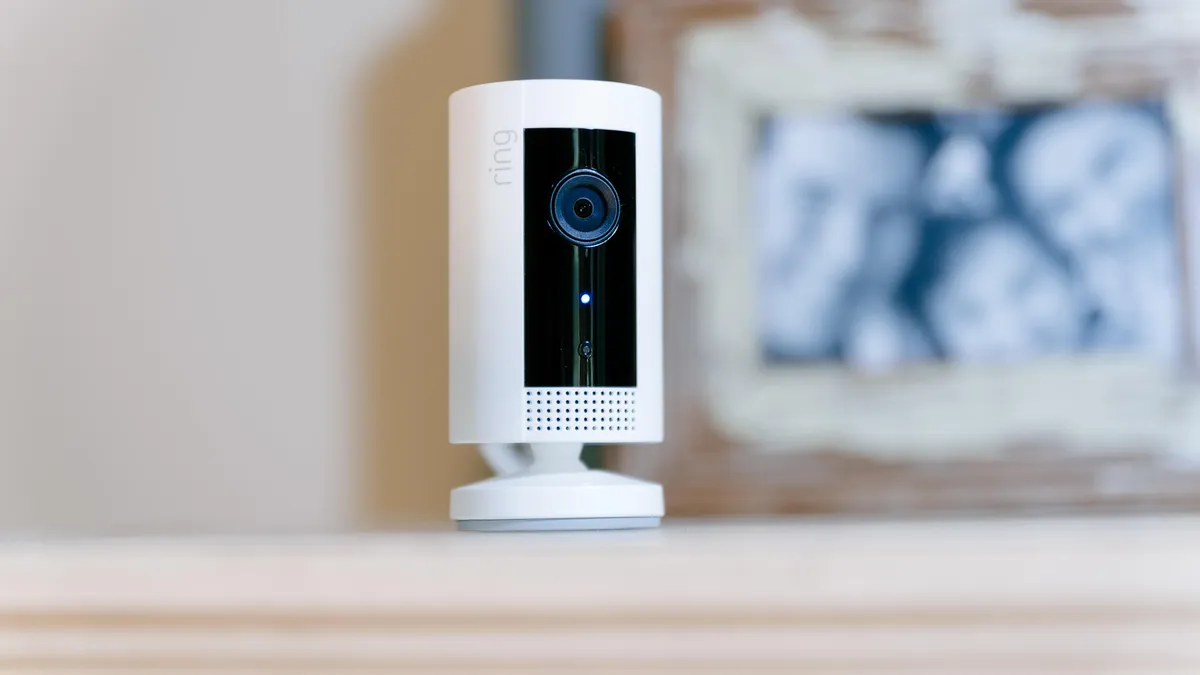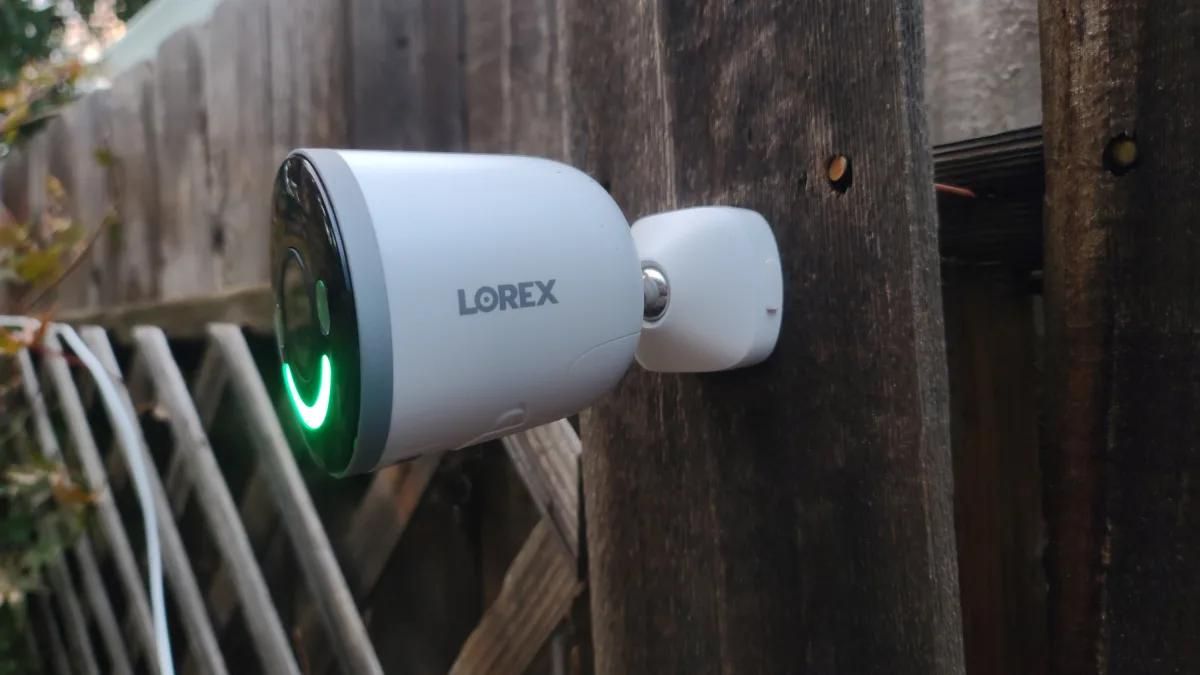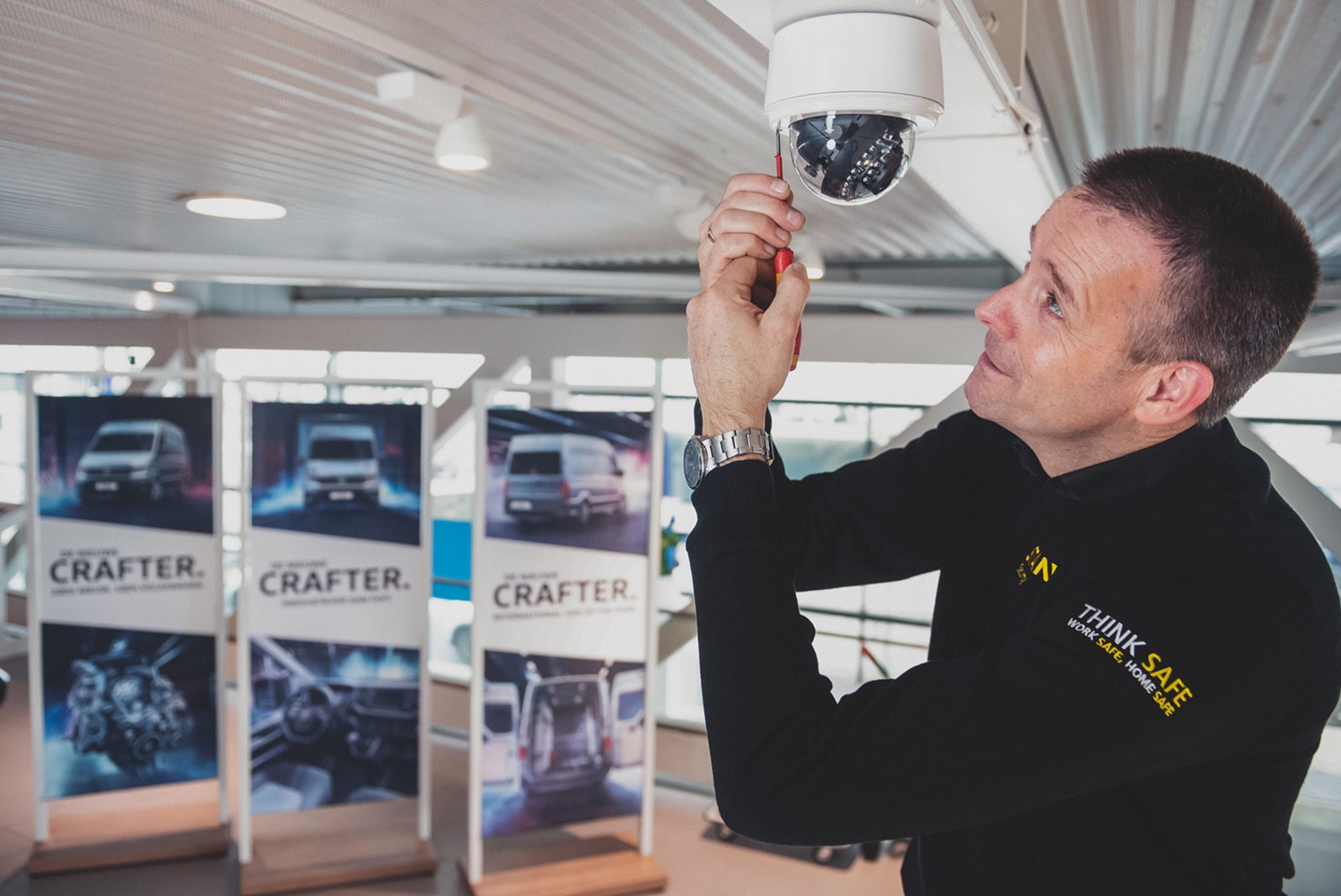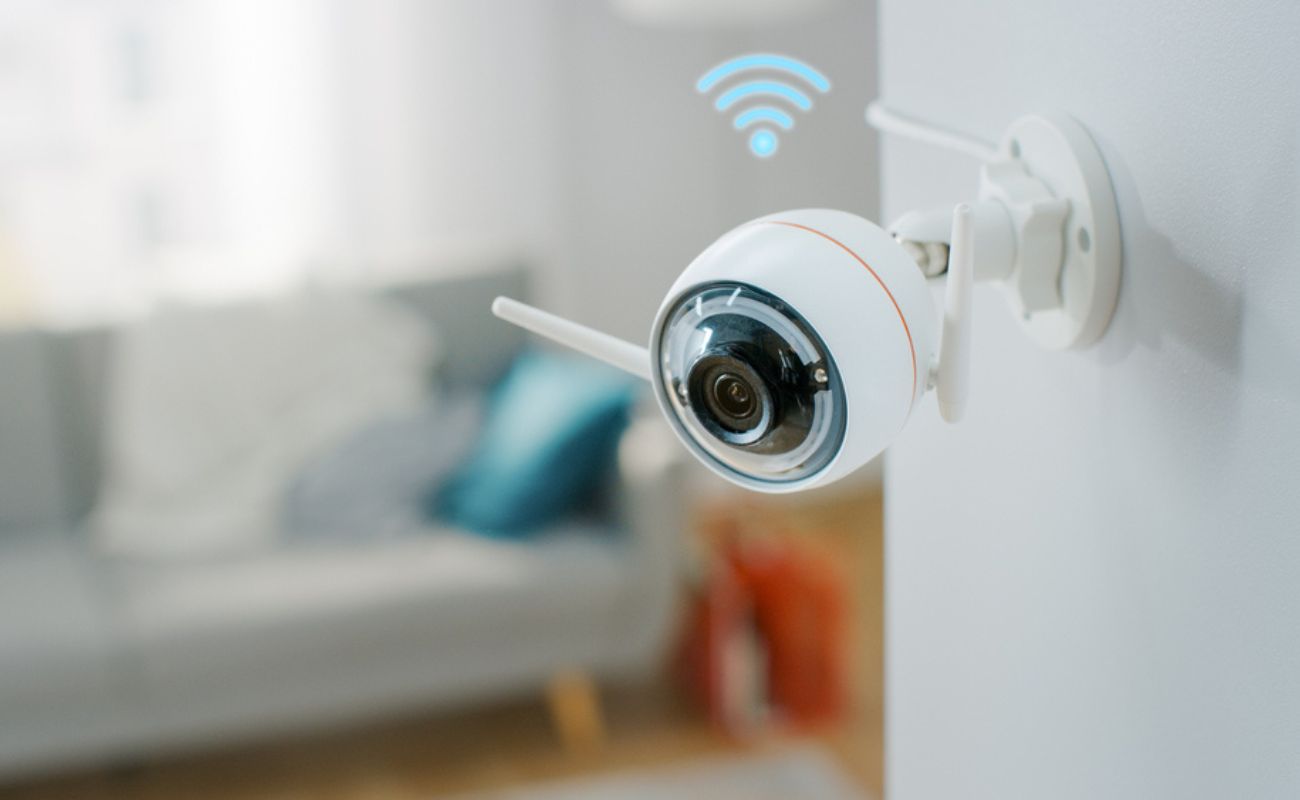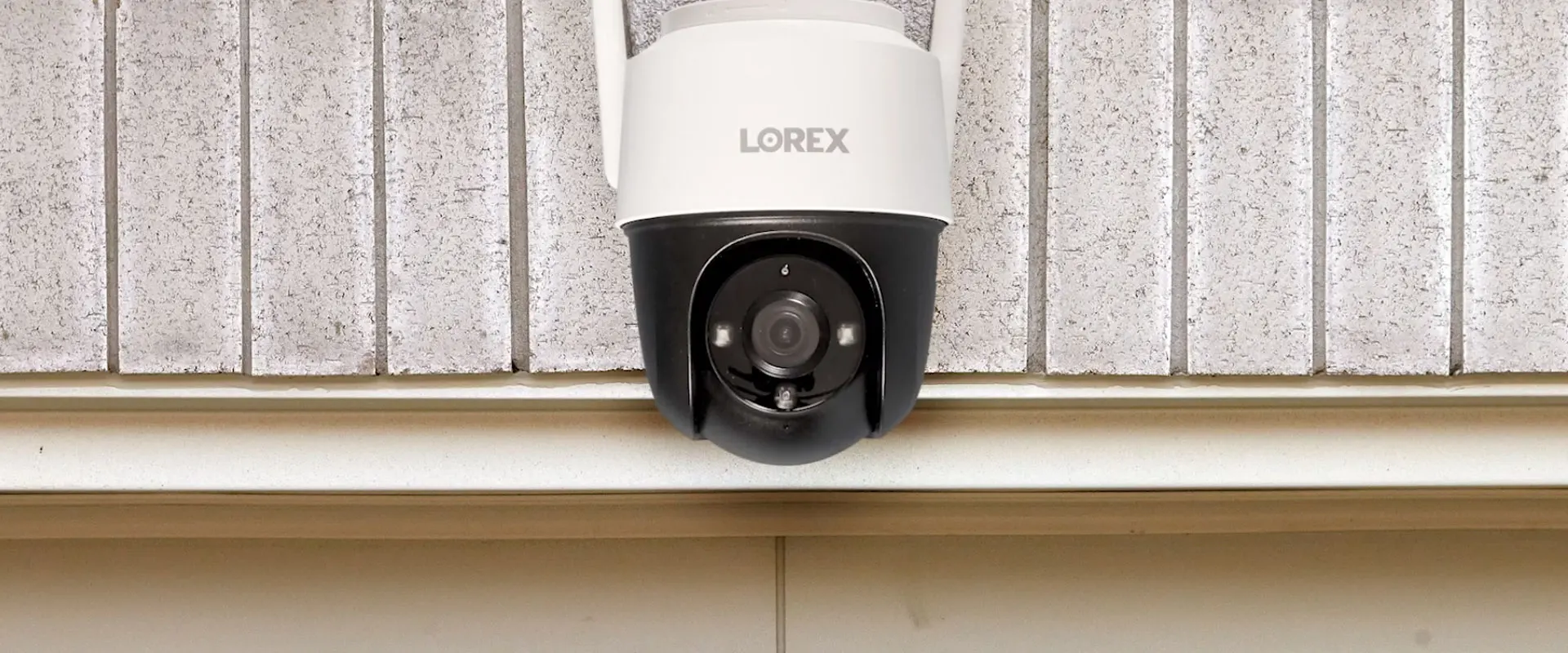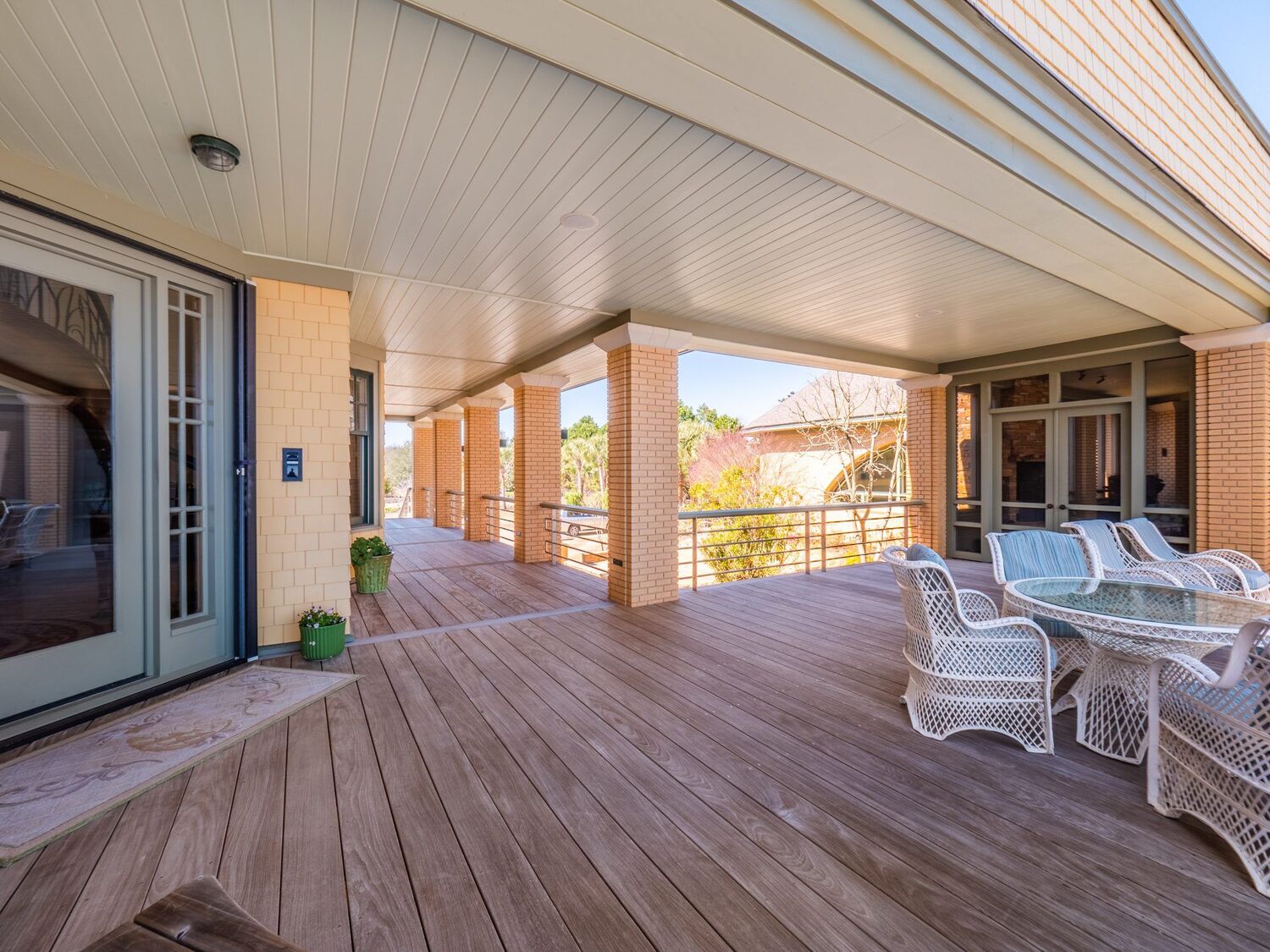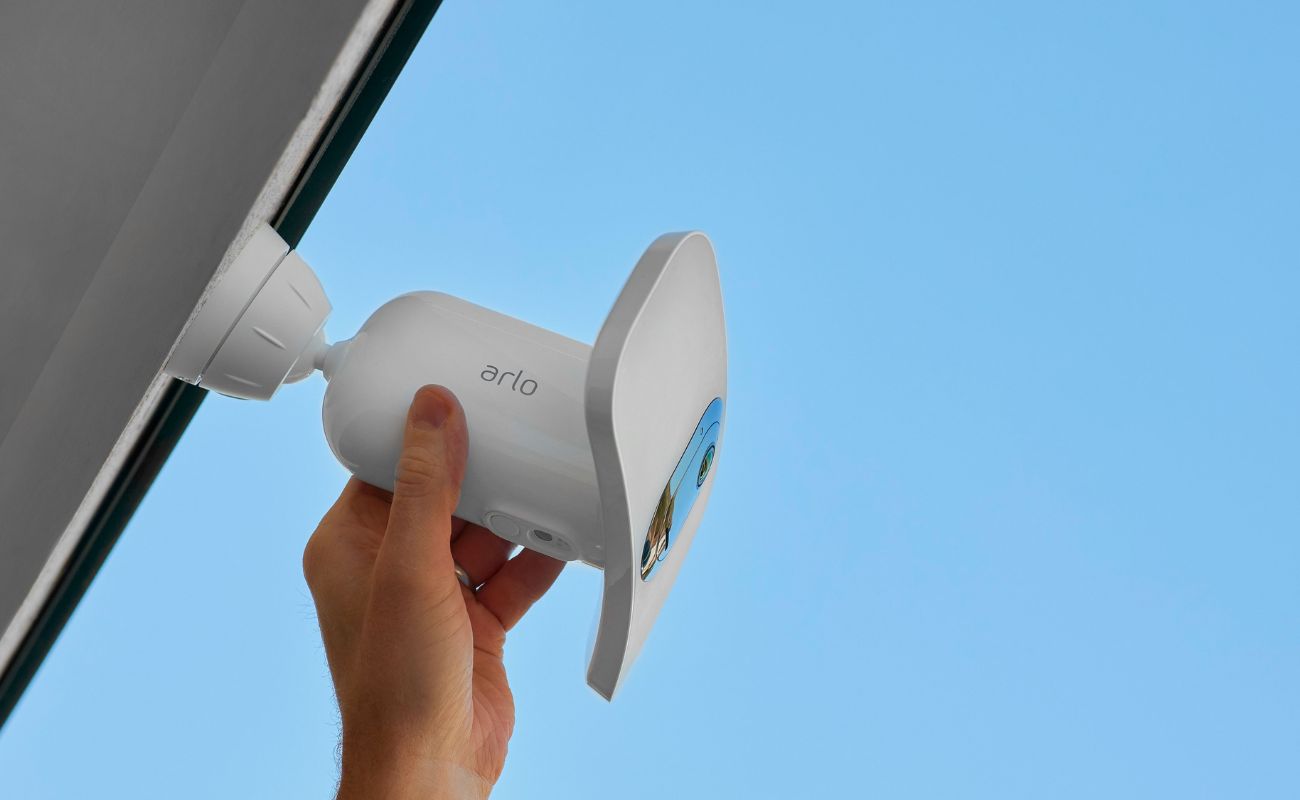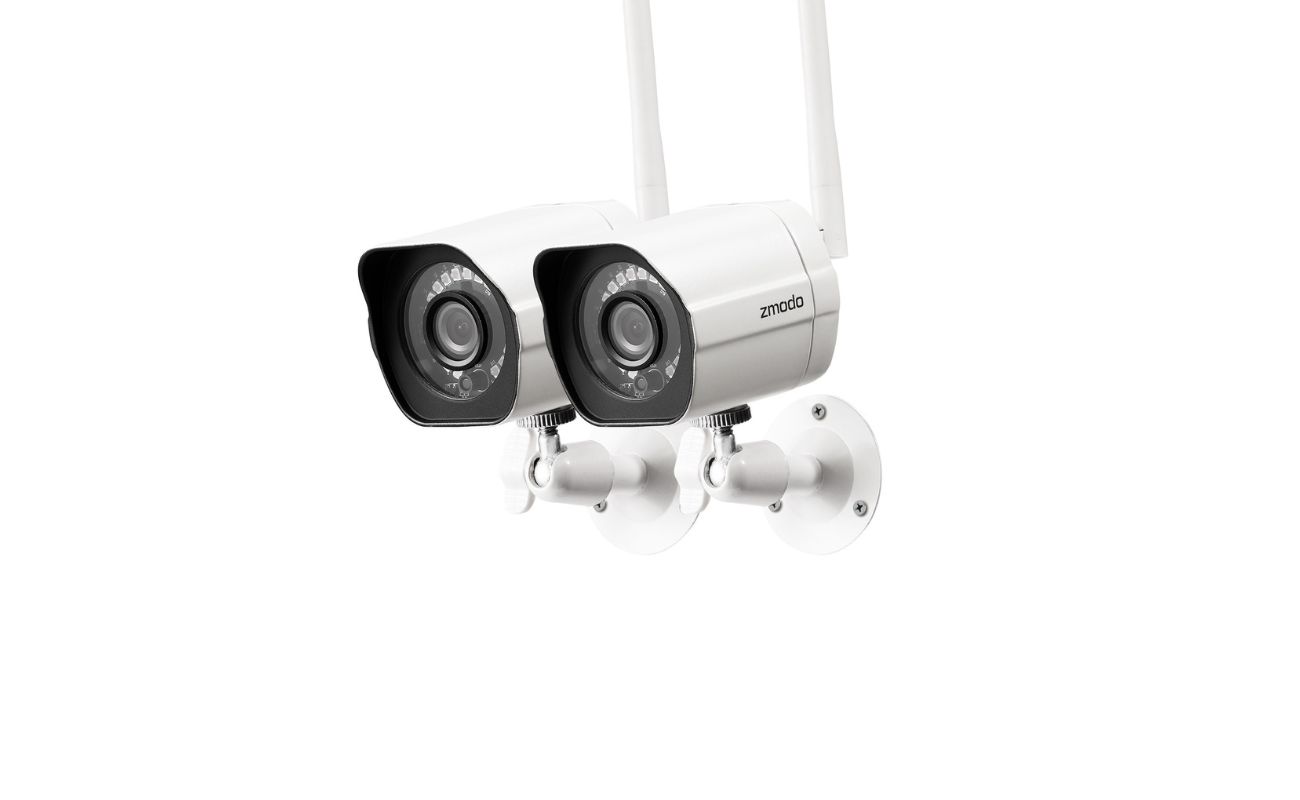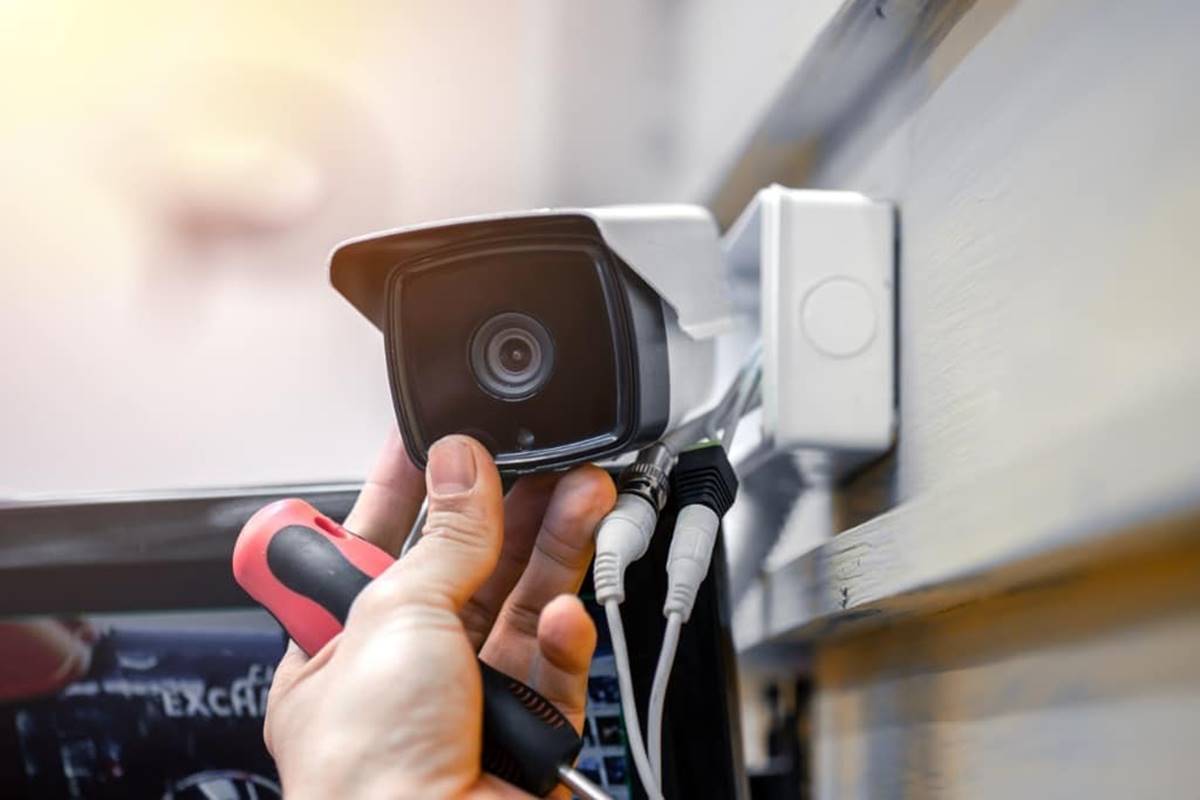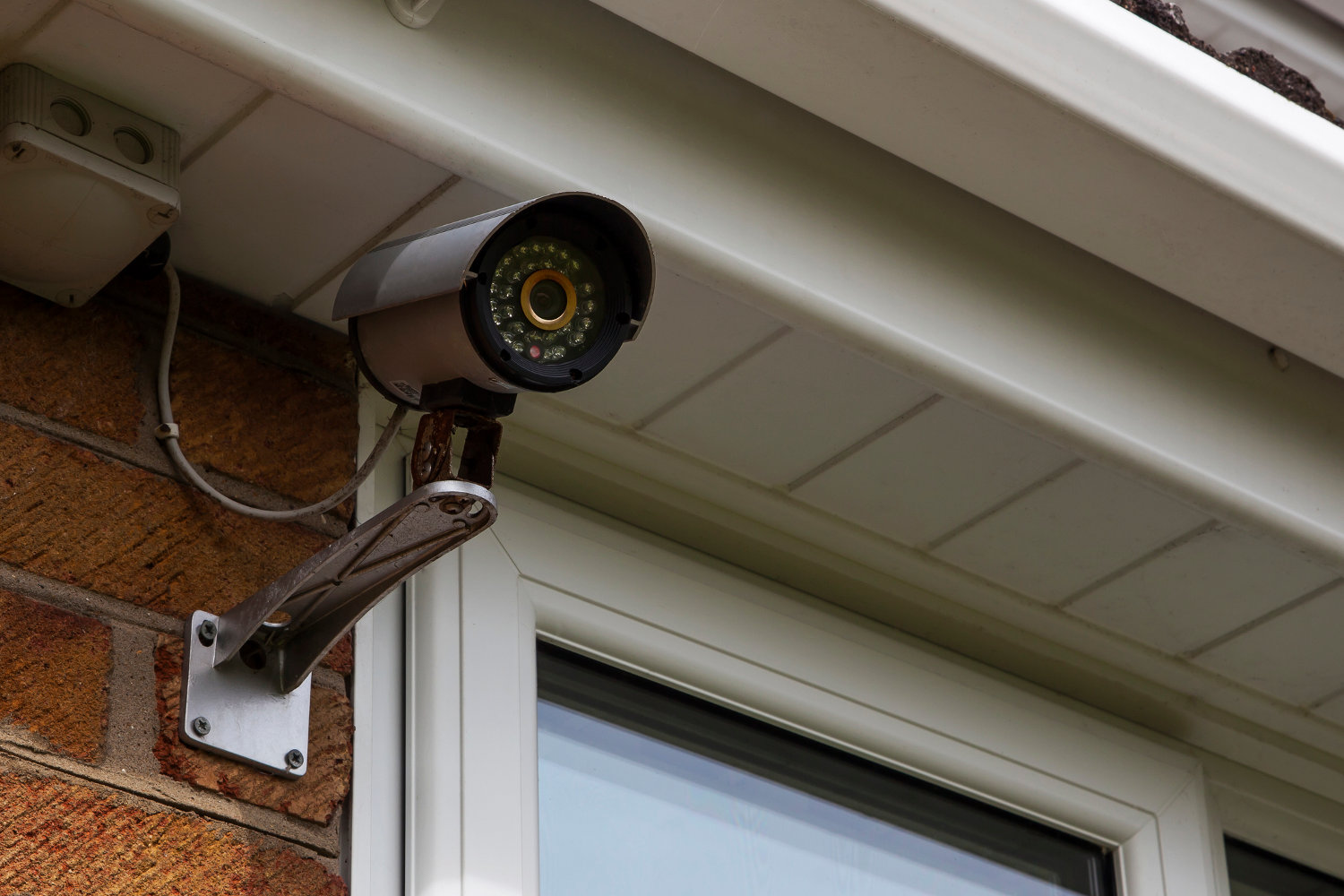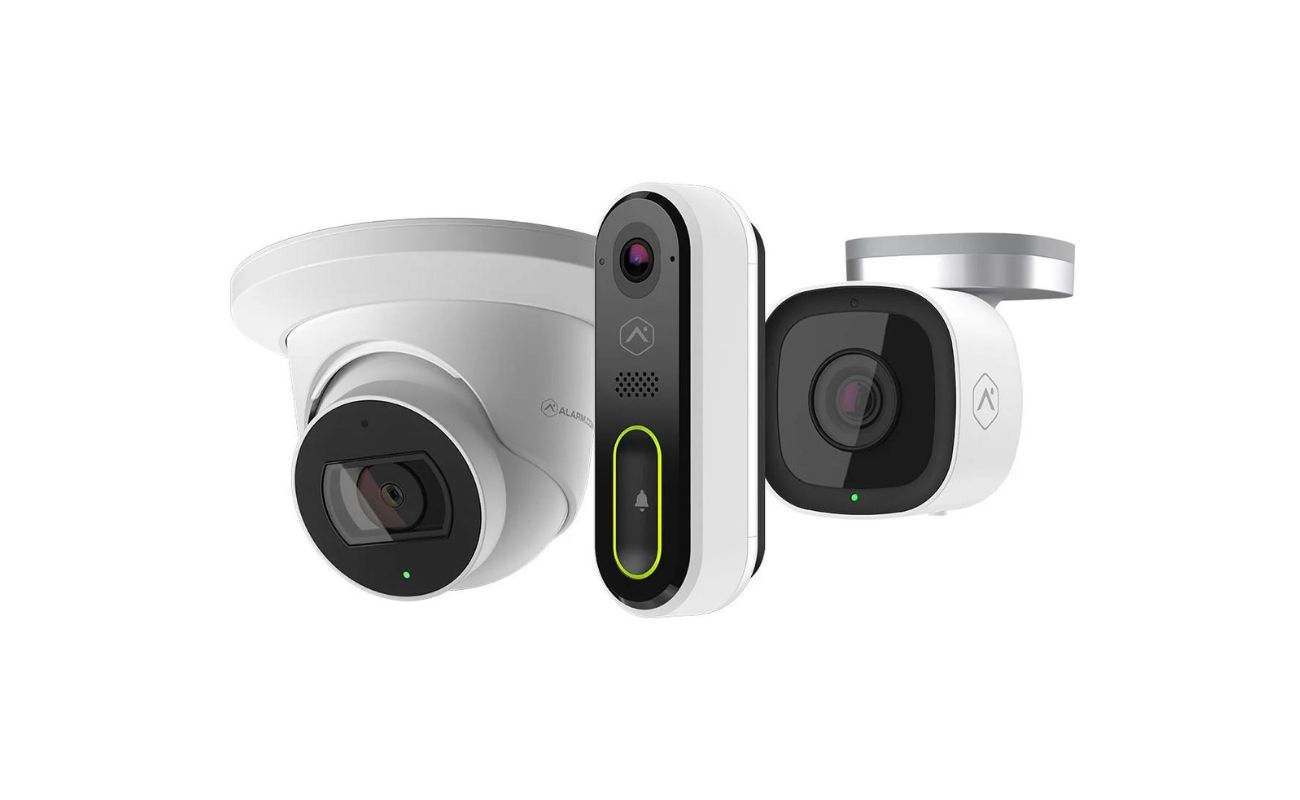Home>Home Security and Surveillance>How To Install Security Cameras On Aluminum Soffit
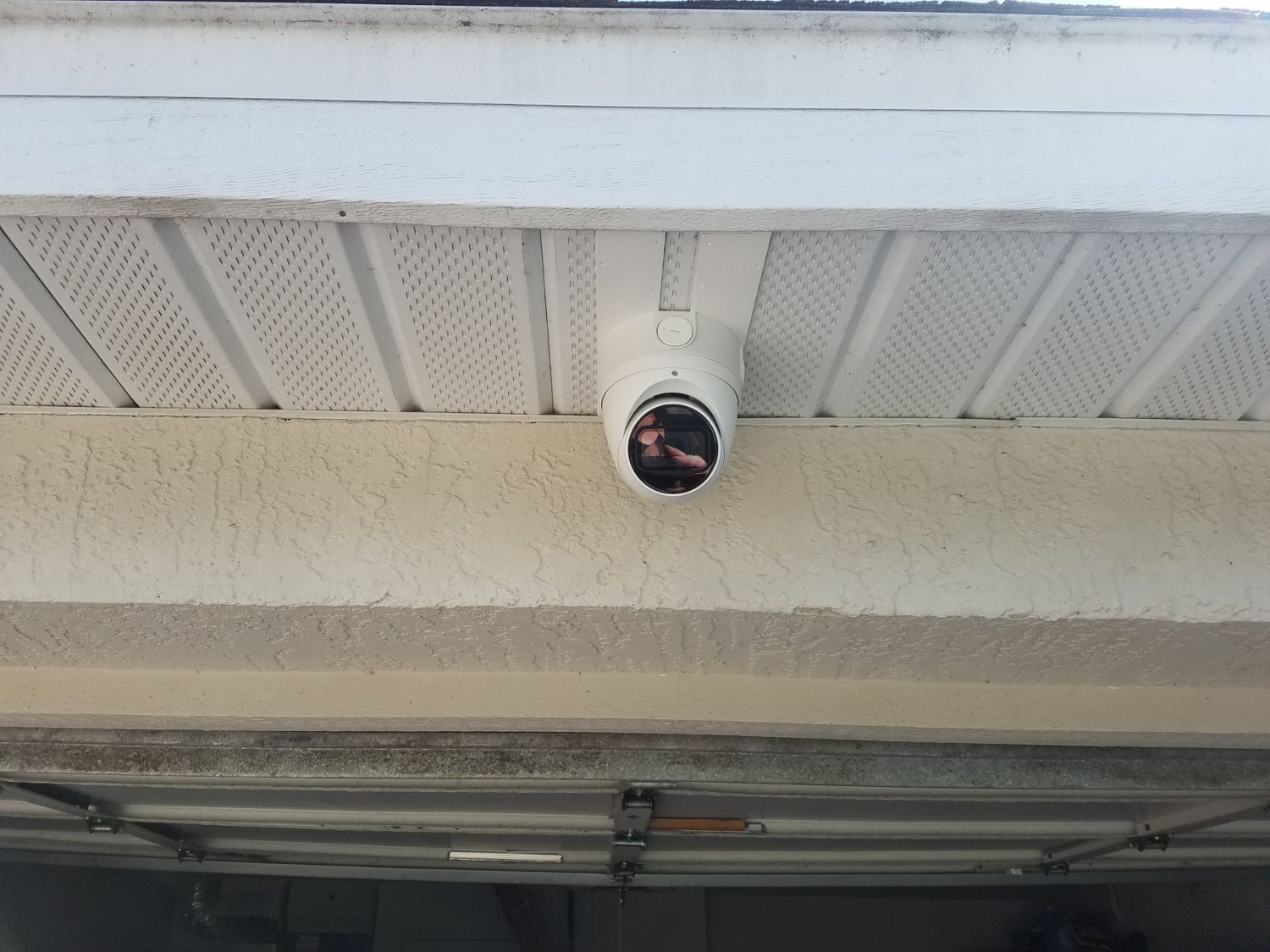

Home Security and Surveillance
How To Install Security Cameras On Aluminum Soffit
Modified: May 6, 2024
Learn how to install security cameras on aluminum soffit for enhanced home security and surveillance. Step-by-step guide and expert tips for effective installation.
(Many of the links in this article redirect to a specific reviewed product. Your purchase of these products through affiliate links helps to generate commission for Storables.com, at no extra cost. Learn more)
Introduction
Welcome to our comprehensive guide on how to install security cameras on aluminum soffit. Investing in a home security system is a crucial step in safeguarding your property and loved ones. With advancements in technology, security cameras have become an essential part of any comprehensive security system. They provide a constant watchful eye and a deterrent against potential intruders.
Mounting security cameras on aluminum soffit can be a practical and aesthetically pleasing solution as it allows for discreet positioning and protection against weather elements. In this article, we will take you through a step-by-step process on how to successfully install security cameras on aluminum soffit, ensuring optimal performance and peace of mind.
Before you begin the installation process, it’s important to gather the necessary tools and materials. Having everything you need on hand will help streamline the installation process and minimize any potential delays. Let’s jump right in and get started with step one – gathering the necessary tools and materials.
Key Takeaways:
- Installing security cameras on aluminum soffit is a practical way to enhance property safety. Follow the step-by-step guide for a successful installation and enjoy added security and peace of mind.
- Properly adjusting the camera angle and settings is crucial for maximizing surveillance effectiveness. Regular maintenance and monitoring ensure continued optimal performance.
Read more: How To Install A Security Camera On Soffit
Step 1: Gather the necessary tools and materials
Before you begin the installation process, it’s essential to gather all the tools and materials you’ll need. Here’s a list of items you should have on hand:
- Security camera(s): Choose high-quality cameras that meet your specific surveillance needs. Consider factors such as resolution, night vision capabilities, and weather resistance.
- Camera brackets: Opt for brackets specifically designed for mounting cameras on aluminum soffit. These brackets should provide stability and easy adjustability.
- Fasteners: Depending on the type of soffit material, you may need screws, bolts, or anchors to secure the camera bracket in place.
- Power drill and drill bits: A power drill will be indispensable for creating holes in the soffit and mounting the camera bracket. Have a set of drill bits ready to accommodate different screw sizes.
- Level: Ensuring that the camera is properly aligned is crucial for effective surveillance. A bubble level will help you achieve a level and straight camera placement.
- Screwdriver: A screwdriver will come in handy for attaching and adjusting the camera bracket.
- Cabling: Consider the length and type of cabling required to connect the camera to your monitoring system or power source. Ethernet cables or Siamese cables are common options.
- Cable clips: These clips will help you neatly route and secure the cabling along the soffit, preventing it from dangling or getting in the way.
- Wire strippers and connectors: If you need to extend or splice the cabling, wire strippers and connectors will be necessary.
- Ladder or scaffolding: Depending on the height of your soffit, you may need a ladder or scaffolding to safely access and work in the installation area.
- Protective gear: Safety should always be a priority. Wear appropriate safety gear, such as gloves and safety goggles, to protect yourself during the installation process.
Having these tools and materials ready before starting the installation will save you time and ensure a smooth and efficient process. With everything in place, you are now ready to move on to step two – determining the camera placement.+
Step 2: Determine the camera placement
Once you have gathered all the necessary tools and materials, it’s time to determine the optimal placement for your security camera. Choosing the right location will ensure maximum coverage and effectiveness of your surveillance system. Here are some factors to consider when determining the camera placement:
- Entrances and critical areas: Identify the main entry points to your property, such as doors, windows, and gates. These areas are usually the most vulnerable and require close monitoring.
- Line of sight: Ensure that the camera’s view is not obstructed by any objects or structures. It should have a clear line of sight to the areas you want to monitor.
- Height and angle: Position the camera at an appropriate height and angle to capture the desired field of view. A higher placement can provide a broader perspective, while a lower angle can offer more detailed close-ups.
- Lighting conditions: Consider the lighting conditions in the area where you plan to install the camera. Ensure that there is sufficient lighting for clear video footage, or choose a camera with night vision capabilities.
- Wireless connectivity: If you’re utilizing wireless cameras, check the signal strength and ensure that your camera placement is within range of your Wi-Fi network.
- Weather protection: Take into account the camera’s exposure to weather elements. If the camera will be subjected to rain, snow, or harsh sunlight, opt for a weather-resistant camera or consider installing a protective housing.
- Aesthetic considerations: While functionality is paramount, aesthetics also play a role. Choose camera placements that blend well with the architecture and do not stick out noticeably.
After evaluating these factors, identify the specific spots where you will mount the cameras on the aluminum soffit. Mark these locations for easy reference during the installation process. With the camera placement determined, you can now move on to step three – preparing the soffit for installation.
Step 3: Prepare the soffit for installation
With the camera placement determined, it’s time to prepare the aluminum soffit for the installation. Proper preparation will ensure a secure and stable mounting surface for your security camera. Follow these steps to prepare the soffit:
- Clean the surface: Start by cleaning the soffit where you plan to mount the camera bracket. Use a mild detergent and water to remove any dirt, dust, or debris. Ensure that the surface is dry before proceeding.
- Locate the studs: The soffit may have studs or beams behind it for structural support. Use a stud finder to locate these studs, as they will provide the most secure anchor for the camera bracket.
- Mark the drilling points: Once the studs are located, use a pencil or marker to mark the drilling points on the soffit. These marks should align with the holes on the camera bracket, ensuring precise placement.
- Drill pilot holes: With the drilling points marked, use a power drill and an appropriate drill bit to create pilot holes at each marked point. Pilot holes will make it easier to insert the screws or anchors during the mounting process.
- Apply silicone sealant (optional): If you want to add an extra layer of protection against moisture or to create a more weatherproof seal, you can apply silicone sealant around the pilot holes before mounting the bracket.
By following these steps and properly preparing the aluminum soffit, you will create a solid foundation for the camera bracket. This preparation ensures stability and longevity for your security camera installation. With the soffit prepared, you can now move on to step four – mounting the camera bracket onto the soffit.
Step 4: Mount the camera bracket onto the soffit
With the soffit prepared, it’s time to mount the camera bracket onto the aluminum surface. The camera bracket provides stability and support for your security camera. Follow these steps to mount the bracket:
- Align the bracket: Position the camera bracket over the pilot holes on the soffit, aligning it with the marks you made earlier. Ensure that the bracket is level and straight to maintain proper camera positioning.
- Insert the fasteners: Once the bracket is aligned, use the appropriate screws, bolts, or anchors to secure it to the soffit. Make sure to tighten the fasteners firmly but avoid overtightening, as it may damage the soffit or affect the bracket’s stability.
- Check for stability: After mounting the bracket, give it a gentle shake to test its stability. Ensure that it is securely attached to the soffit and can withstand any external forces or vibrations.
It’s important to note that the specific instructions for mounting the camera bracket may vary depending on the manufacturer and model you are using. Therefore, always refer to the manufacturer’s guidelines for the most accurate and detailed instructions.
Once the camera bracket is securely mounted on the soffit, you are ready to move on to the next step – connecting the camera to the bracket. This step is crucial as it ensures that the camera is firmly attached and properly aligned for effective surveillance.
When installing security cameras on aluminum soffit, use specialized mounting brackets designed for soffit installation. These brackets will provide a secure and stable base for your cameras.
Read more: Who Installs Security Cameras
Step 5: Connect the camera to the bracket
Now that the camera bracket is securely mounted onto the soffit, it’s time to connect the security camera to the bracket. This step ensures that the camera is firmly attached, allowing for proper alignment and positioning. Follow these steps to connect the camera to the bracket:
- Refer to the camera’s manual: Every camera model may have a different method for connecting to the bracket. Consult the camera’s manual or manufacturer’s instructions for specific guidance.
- Locate the mounting interface: Look for the mounting interface on the camera or camera housing. It is usually located at the bottom or back of the camera.
- Align the camera with the bracket: Align the mounting interface of the camera with the corresponding connector on the camera bracket. Ensure that the camera is positioned correctly and securely fastened to the bracket.
- Secure the camera: Use the provided screws or fasteners to secure the camera to the bracket. Make sure they are tightened securely but be cautious not to over-tighten to avoid damaging the camera or bracket.
After connecting the camera to the bracket, give it a gentle shake to ensure that it is firmly attached and stable. This step is crucial as it ensures that the camera remains securely in place, even in challenging weather conditions or if tampered with.
Once the camera is securely connected to the bracket, we can move on to the next step – adjusting the camera angle and settings. This step is vital for optimizing the camera’s view and capturing the desired areas effectively.
Step 6: Adjust the camera angle and settings
Now that the camera is securely connected to the bracket, it’s time to fine-tune the camera’s angle and settings to optimize its view and performance. Proper adjustment ensures that the camera captures the desired areas effectively and provides clear and accurate surveillance footage. Follow these steps to adjust the camera angle and settings:
- Access the camera’s settings: Depending on the camera model, you may need to access the camera’s settings through a web interface, a mobile app, or directly on the camera itself. Consult the camera’s manual or manufacturer’s instructions for the specific method.
- Position the camera: With the camera powered on, position it in the desired direction and angle. Use the camera bracket’s adjustability to fine-tune the angle and ensure optimal coverage of the area you want to monitor.
- Check the camera’s view: Monitor the camera’s live feed on a computer or mobile device to check the camera’s view. Ensure that the camera captures the desired areas and that there are no blind spots or obstructions blocking the view.
- Adjust camera settings: Access the camera’s settings and make adjustments according to your preferences. This may include tweaking image quality, resolution, motion detection sensitivity, recording schedules, and any other available settings provided by the camera manufacturer.
- Test the camera: Perform a thorough test of the camera’s functionality. Verify that it captures clear video footage during the day and night, and that it detects motion accurately. Make any necessary adjustments to ensure optimal performance and minimize false alarms.
Properly adjusting the camera angle and settings is essential for maximizing the effectiveness of your security system. Spend some time fine-tuning these aspects to ensure that your camera provides comprehensive and accurate surveillance coverage.
With the camera angle and settings adjusted, we can move on to the final step – testing the camera and making any final adjustments before completing the installation.
Step 7: Test the camera and make final adjustments
Now that the camera has been installed and adjusted, it’s time to put it to the test. Testing the camera ensures that it functions correctly, captures clear video footage, and meets your surveillance requirements. Follow these steps to test the camera and make any final adjustments:
- Check the camera’s feed: Monitor the camera’s live feed on a computer, smartphone, or monitor connected to your surveillance system. Verify that the camera is capturing clear and high-quality video footage.
- Test different scenarios: Test the camera’s performance in different lighting conditions, such as during the day and at night. Ensure that it adapts to changing light levels and provides clear and detailed images.
- Verify the camera’s field of view: Walk around the monitored areas to verify that the camera’s field of view covers all the desired areas effectively. Make any necessary adjustments to the camera’s position or angle to eliminate any blind spots.
- Adjust motion detection settings: Fine-tune the camera’s motion detection settings to avoid false alarms while ensuring that it detects any relevant activity. Test the camera’s motion detection capabilities by intentionally triggering the motion sensors and assessing its response.
- Review footage playback: Once the camera has been tested in various scenarios, review the footage playback to ensure that the recorded video is clear, well-focused, and accurately captures any activity or events.
- Make final adjustments: If you identify any issues or areas for improvement during the testing process, make the necessary adjustments. This may include repositioning the camera, adjusting its settings, or fine-tuning the sensitivity of motion detection.
By thoroughly testing the camera and making any final adjustments, you can have confidence in the effectiveness and reliability of your newly installed security camera. Regularly monitor and maintain your surveillance system to ensure its continued optimal performance.
Congratulations! You have now successfully installed and tested your security camera on the aluminum soffit. Your property is now equipped with an advanced surveillance system to enhance safety and provide peace of mind. Remember to consult the manufacturer’s guidelines and seek professional assistance if needed. Enjoy the added security and protection that your security camera provides!
Thank you for reading our comprehensive guide on how to install security cameras on aluminum soffit. Stay vigilant and prioritize safety in your home or business.
Conclusion
Installing security cameras on aluminum soffit is a practical and effective way to enhance the safety and security of your property. By following the step-by-step guide outlined in this article, you can successfully install and set up your security cameras with ease.
We started by gathering the necessary tools and materials, ensuring that you have everything you need for a smooth installation process. Next, we discussed the importance of determining the camera placement, taking into account factors such as entrances, line of sight, lighting conditions, and aesthetic considerations.
Afterwards, we delved into preparing the soffit for installation, which involved cleaning the surface, locating the studs, marking drilling points, and creating pilot holes. Then, we moved on to mounting the camera bracket onto the soffit, ensuring proper alignment and secure fastening.
With the camera bracket securely installed, we then connected the camera to the bracket, ensuring a stable and firmly attached setup. Adjusting the camera angle and settings was the next step, allowing for optimal coverage and image quality.
After adjusting the camera, it was time to test its functionality and performance. We checked the camera’s feed, tested different scenarios, verified the field of view, adjusted motion detection settings, and reviewed footage playback to ensure the camera met our surveillance requirements.
Finally, we made any necessary final adjustments before concluding the installation process. By following these steps, you have successfully installed security cameras on your aluminum soffit, providing added security and peace of mind for your property.
Remember to regularly maintain and monitor your security camera system to ensure continued functionality and effectiveness. Stay vigilant, prioritize safety, and consult professional assistance when needed.
Thank you for reading our comprehensive guide. We hope it has provided you with valuable insights and knowledge on installing security cameras on aluminum soffit. Stay safe and secure!
Now that you've mastered installing security cameras on aluminum soffit, consider diving deeper into the benefits of bolstering your home's safety measures. Our next read delves into the compelling reasons why enhancing your property with a robust security system is not just a luxury but a necessity. This insightful article uncovers various ways that a security setup can safeguard your loved ones and valuables, offering peace of mind in today's unpredictable environment.
Frequently Asked Questions about How To Install Security Cameras On Aluminum Soffit
Was this page helpful?
At Storables.com, we guarantee accurate and reliable information. Our content, validated by Expert Board Contributors, is crafted following stringent Editorial Policies. We're committed to providing you with well-researched, expert-backed insights for all your informational needs.
